How to Replace a Video Card
Select the video card

Balance between budget and needs. A graphics card can easily be the most expensive component in a computer, but it doesn't have to be. If you use your budget wisely, mid-range cards can still deliver stable performance depending on your needs. If you are a game fanatic and want to play new games with the highest possible configuration, consider high-end and expensive video cards. If you only play games occasionally, are less interested in new releases, or don't mind cutting back on some graphics settings, you can save quite a bit of money by buying a mid-range video card. If you just need to watch HD videos or play some 2D games, the cheapest graphics card in your budget will be enough.
Find out before you buy. Websites likeTinhte.vnandvozforums.comRegularly test and compare new and upcoming video cards. The results of these tests can help you quickly compare options to find the most suitable video card for yourself.
Don't worry about the memory (RAM) of the video card. This parameter is often used to make poor quality graphics cards more worth buying. However, memory bandwidth is the important factor . This is the speed at which the memory can send and receive data from the computer. When it comes to this factor, GDDR5 is currently the top choice with 4 times superior performance compared to old GDDR3 memory.
If your current CPU is mid-range, you may not be able to use the full capabilities of a high-end video card. The video card is an important factor in performance, but for the game to run smoothly, it also depends on all components with different capacities in the machine such as CPU, RAM system and read/write speed of the drive. hard disk.
4K games are increasingly popular, but to play games at this resolution requires you to use one (or even two) of the best graphics cards to meet the performance. In addition, a 4K screen is also a necessary peripheral if you intend to play 4K games.

Remove the chassis cover. Before buying a video card, you need to check a few parameters by looking inside the case or the accompanying documentation. The side cover of the case is usually fixed to the back with pink screws or Phillips screws, which you can unscrew to remove. Typically, the side cover that you remove will be across from the motherboard input/output controls on the back of the computer.
We cannot upgrade laptop graphics cards, except in rare cases. Refer to your laptop's documentation to learn how to upgrade the video card (if possible).
During the process of removing the case and working inside the computer, you must know how to ground yourself. This will help prevent static electricity from damaging internal components of the machine. You can ground yourself by wearing an anti-static bracelet, or by touching a running faucet before starting.
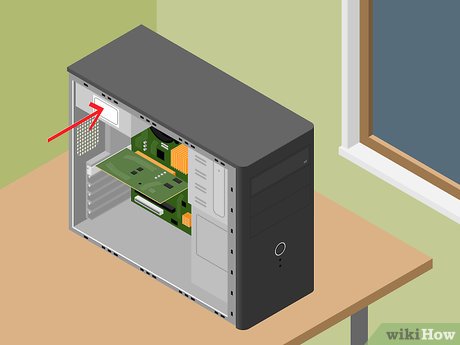
Check the power source. The video card is one of the parts that consumes the most power, so you need to check to make sure that the current power source can meet the power requirements of the graphics card. Each type of graphics card has different input power, so before buying, you need to compare the specifications of the video card with the power supply on the computer.
There are many online power calculators where you can enter all the components and see the minimum recommended power in watts (W). You should use a power capacity slightly greater than the minimum to limit future impacts to your computer. Another general rule you can apply to calculate the required power capacity is to double the number of watts required by the graphics card.
If you plan to install multiple graphics cards in one computer, the minimum power output will be 1 kW.
There is no way to determine power supply capacity other than direct observation. No software can accurately report this parameter. Most power supplies have specifications labeled on the side. Usually you just need to remove the cover on the side of the case and look at the parameters on the sticker.
Many more powerful graphics cards require one or two 6-pin (PCIe) power connectors. Most power supplies today have these cables, but older models do not. In this case, you can buy an additional adapter to connect, or replace the power supply with a more modern one.
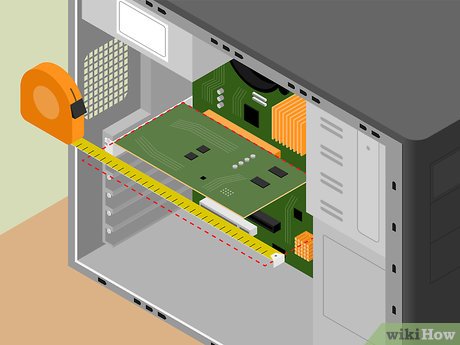
Estimate the space the new video card will need. Graphics cards need a lot of space, so you will have difficulty, or even be unable to install the type of video card you have chosen if your computer case is small and cramped. Use a tape measure to measure the video card installation position and compare it with the specifications of the graphics card you will buy. Remember to look carefully at the width because the more powerful the graphics card, the larger the size will be.
The graphics card only needs to be plugged into one PCIe slot, but can actually take up the space of two slots.
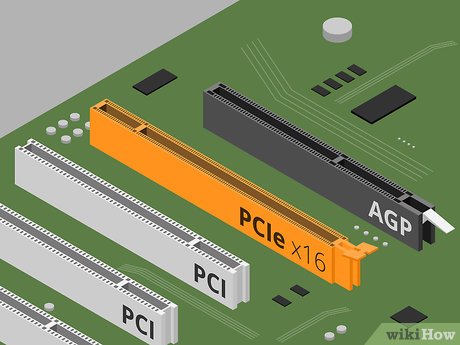
Check motherboard compatibility. Nearly all new graphics cards use the PCIe interface to replace the old AGP method. If the computer was purchased/installed within the last 10 years, it is likely to use the PCIe method. With an outdated computer, you will probably have to work with the AGP interface (unless the motherboard is upgraded).
The PCIe and AGP slots have different colors on the motherboard. AGP is usually dark in color (such as brown), while PCIe is usually white, yellow, or blue. However, there are no specific standards for these colors, so you need to refer to the motherboard's documentation or look at the labels located next to the slots.
On a motherboard, PCIe slots are usually located closest to the CPU.
Install a new video card
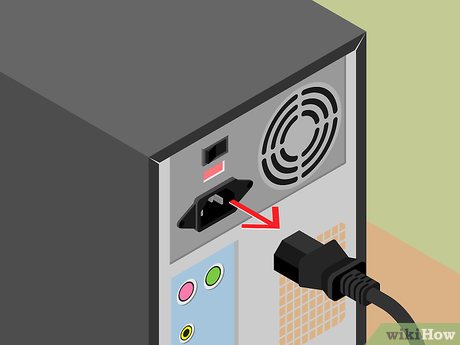
Power off the computer. You need to make sure the computer is completely turned off before working on the inside. After shutting down, unplug the computer.
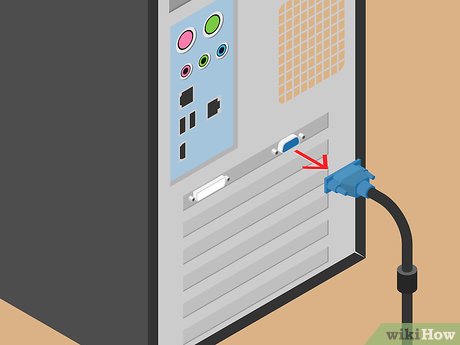
Disconnect the monitor. The monitor is usually connected to the graphics card, so you'll need to unplug the monitor from the case first.
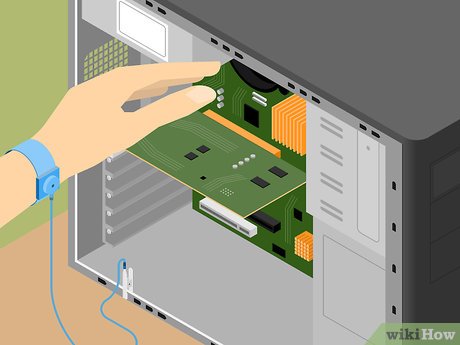
Self-grounding. Whenever you work with components inside your computer, you need to ensure strict self-grounding procedures. Wearing an anti-static bracelet connected to the bare metal of the case is the most convenient way to ground yourself. You can also ground yourself by touching an open metal faucet.
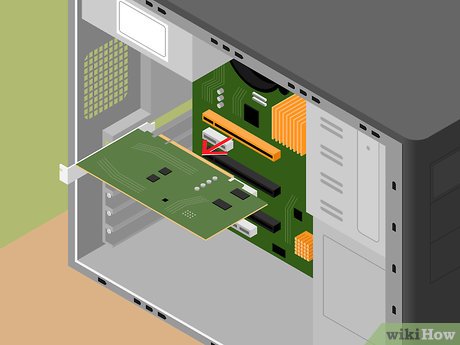
Remove the old video card (if necessary). If you're upgrading, first remove the old video card and replace it with the new one. If your computer uses an integrated graphics card on the motherboard, you will not be able to remove it.
Use a Phillips screwdriver to remove the screws holding the old video card in place.
Unplug the cables connecting the video card.
Open the latch located below the rear end of the video card (PCIe). This is a fixed latch so you need to open it first before you can pull out the video card.
Directly pull the old video card out of the slot gently. Pull the old video card straight out of the slot. You need to use a little force, but not too much. If you can't pull the card out, check to see if you've missed the Phillips screw or unfastened the latch.
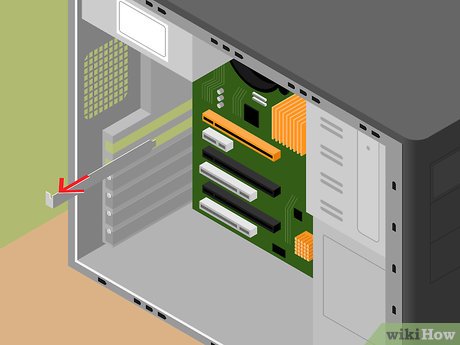
Remove the engine compartment cover (if necessary). Many newer graphics cards require two bays at the back of the computer. You need to remove the protective plate in the next engine compartment if it has not been used before. How to remove these covers will depend on the computer, but they should generally pop off easily.
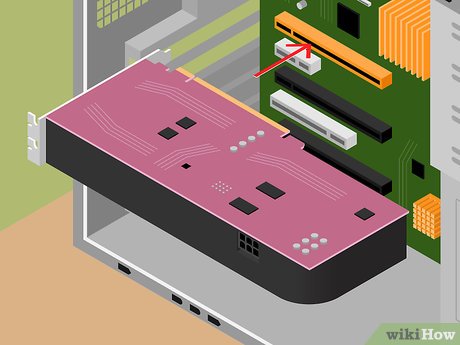
Install a new video card. You need to check to make sure there are no cables obstructing the slot or straining backwards due to the video card. Push the video card straight down into the PCIe slot until you hear a 'click' and the card sits neatly in the slot. Screw the included Phillips screw to secure the graphics card to the case. You must secure the video card to all relevant chassis bays.
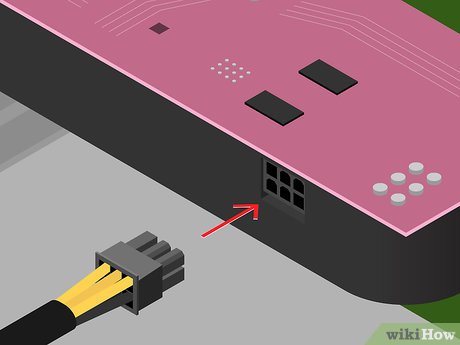
Connect the power supply. Most newer video cards require at least one 6 or 8-pin connector from the power supply, which you can usually find along the top of the card. You must connect all these connectors, if the graphics card is not powered properly, the computer will not be able to boot.
Due to the specific design of the plug, the cable head can only be inserted in one direction. Do not use strong force when inserting the cable, but the plug must be connected in the correct direction and firmly.
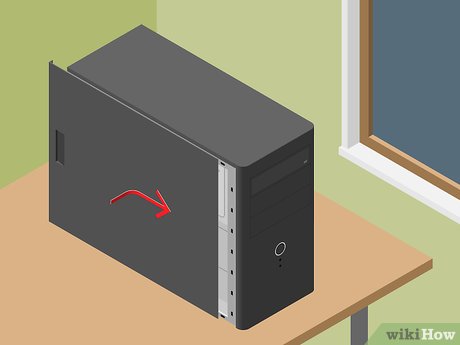
Close the case. After installing and connecting the video card to the power supply, you can close the case and move on to the software installation process.
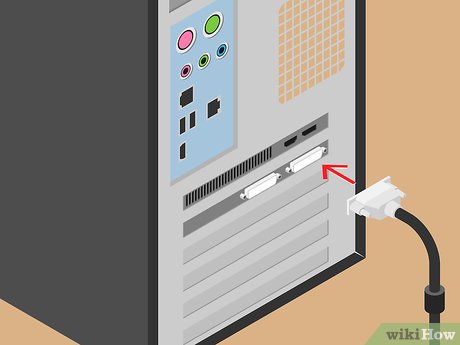
Connect the monitor to the new graphics card. When you plug the cables back into your computer, you need to check to see if the monitor is connected to one of the new graphics card's ports. If your monitor is outdated and your graphics card is new, you may need to use an adapter to connect. Most video cards come with an adapter.
Install the driver
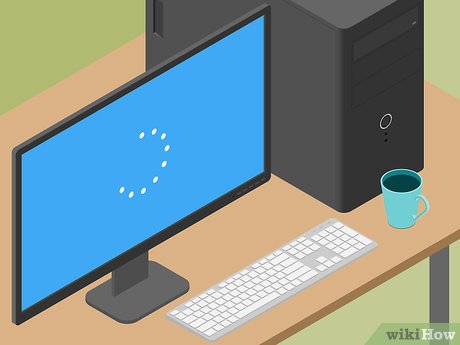
Start Windows. Before testing the drivers, you need to make sure that the computer boots properly. If the computer does not start or has an error when turned on, the video card may not be in the correct position or not receiving enough power.
Windows will usually start in low resolution mode the first time when working with a new video card. Ignore new hardware detection notifications.
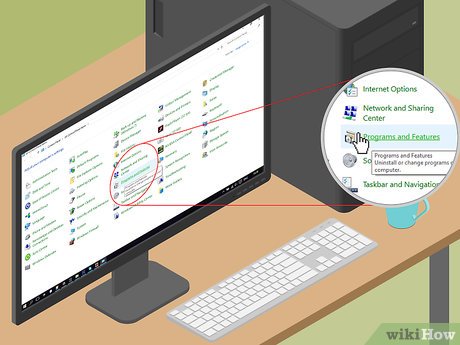
Uninstall old drivers. If the old video card is from AMD/ATI and the new card is from NVIDIA (or vice versa), you will need to uninstall the old drivers first to avoid conflicts. However, if the new video card is from the same manufacturer as the previous card, you should still delete the old drivers and start over. You can uninstall the driver in Control Panel.
Open Control Panel and select "Programs and Features" or "Uninstall a program". On Windows XP, you need to select "Add or Remove Programs".
Find the graphics driver in the list of installed programs. For NVIDIA video cards, the driver will be "NVIDIA Graphics Driver XXX.XX". If you are removing AMD/ATI drivers, look for the name "AMD Catalyst Install Manager".
Follow the instructions to uninstall the driver. For NVIDIA, select the driver, click Uninstall and follow the instructions. For AMD, you need to select "AMD Catalyst Install Manager", click Change, select "Express Uninstall ALL AMD Software" and then proceed according to the instructions.
Restart the computer after removing the driver. So the uninstallation process has been completed.
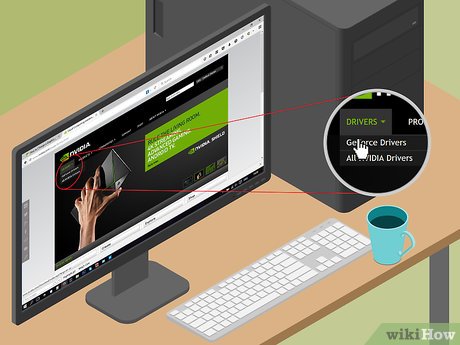
Download the latest driver from the manufacturer's website. Now that you have removed the old drivers, you can install the drivers for the new video card. Don't bother with the drivers on the disc that comes with the video card because they are outdated. Visit the AMD or NVIDIA website (depending on the type of video card) and enter the model of the new card into the search engine (Search). Then, download the latest drivers for your video card model.
The driver is quite heavy (about 300 MB) and will take some time depending on your network speed.
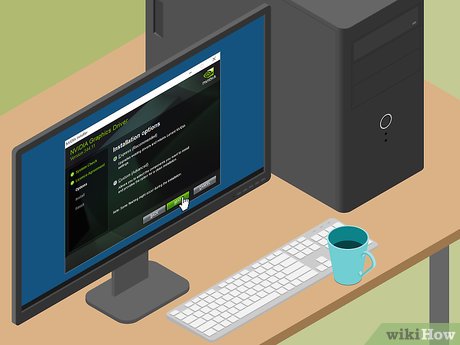
Launch the new driver's installation program. Follow the instructions to install the driver for your computer. Most users can choose "Express". During the driver installation process, the screen will flash a few times and switch to a more appropriate resolution.
You will be asked to restart your computer after the driver installation is complete.
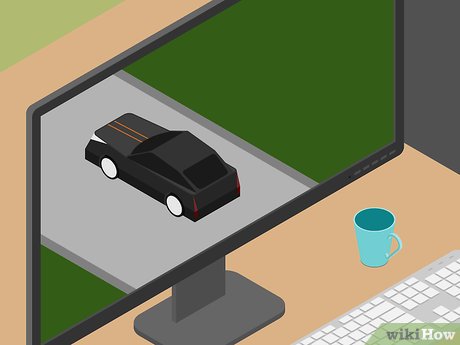
Start using the new video card. Once you have installed the new driver, you can start enjoying the upgraded video card. Try launching your favorite game or professional graphics program to see if your computer's performance satisfies you.
 How to Repair a Physically Damaged Hard Drive
How to Repair a Physically Damaged Hard Drive How to Repair an LCD Screen
How to Repair an LCD Screen How to Fix Cyclic Redundancy Check Error
How to Fix Cyclic Redundancy Check Error How to Fix Keyboard Input Wrong Character Error
How to Fix Keyboard Input Wrong Character Error How to Repair USB
How to Repair USB How to Use USB as RAM
How to Use USB as RAM